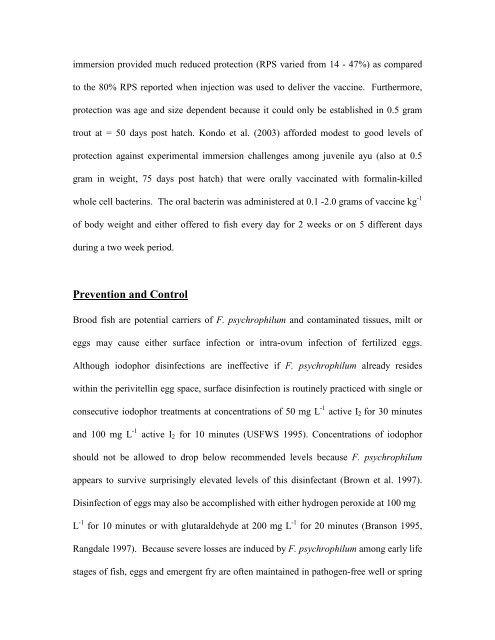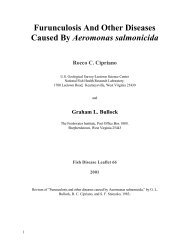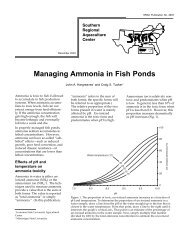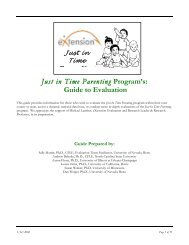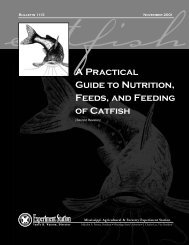Flavobacterium psychrophilum, cause of ... - cop.eXtension.org
Flavobacterium psychrophilum, cause of ... - cop.eXtension.org
Flavobacterium psychrophilum, cause of ... - cop.eXtension.org
Create successful ePaper yourself
Turn your PDF publications into a flip-book with our unique Google optimized e-Paper software.
immersion provided much reduced protection (RPS varied from 14 - 47%) as compared<br />
to the 80% RPS reported when injection was used to deliver the vaccine. Furthermore,<br />
protection was age and size dependent be<strong>cause</strong> it could only be established in 0.5 gram<br />
trout at = 50 days post hatch. Kondo et al. (2003) afforded modest to good levels <strong>of</strong><br />
protection against experimental immersion challenges among juvenile ayu (also at 0.5<br />
gram in weight, 75 days post hatch) that were orally vaccinated with formalin-killed<br />
whole cell bacterins. The oral bacterin was administered at 0.1 -2.0 grams <strong>of</strong> vaccine kg -1<br />
<strong>of</strong> body weight and either <strong>of</strong>fered to fish every day for 2 weeks or on 5 different days<br />
during a two week period.<br />
Prevention and Control<br />
Brood fish are potential carriers <strong>of</strong> F. <strong>psychrophilum</strong> and contaminated tissues, milt or<br />
eggs may <strong>cause</strong> either surface infection or intra-ovum infection <strong>of</strong> fertilized eggs.<br />
Although iodophor disinfections are ineffective if F. <strong>psychrophilum</strong> already resides<br />
within the perivitellin egg space, surface disinfection is routinely practiced with single or<br />
consecutive iodophor treatments at concentrations <strong>of</strong> 50 mg L -1 active I2 for 30 minutes<br />
and 100 mg L -1 active I2 for 10 minutes (USFWS 1995). Concentrations <strong>of</strong> iodophor<br />
should not be allowed to drop below recommended levels be<strong>cause</strong> F. <strong>psychrophilum</strong><br />
appears to survive surprisingly elevated levels <strong>of</strong> this disinfectant (Brown et al. 1997).<br />
Disinfection <strong>of</strong> eggs may also be accomplished with either hydrogen peroxide at 100 mg<br />
L -1 for 10 minutes or with glutaraldehyde at 200 mg L -1 for 20 minutes (Branson 1995,<br />
Rangdale 1997). Be<strong>cause</strong> severe losses are induced by F. <strong>psychrophilum</strong> among early life<br />
stages <strong>of</strong> fish, eggs and emergent fry are <strong>of</strong>ten maintained in pathogen-free well or spring


